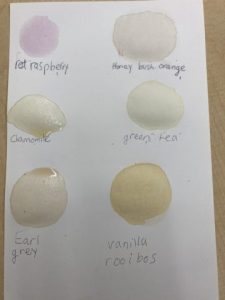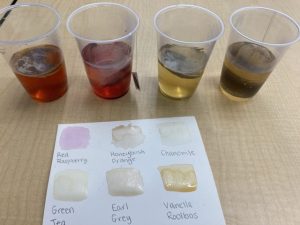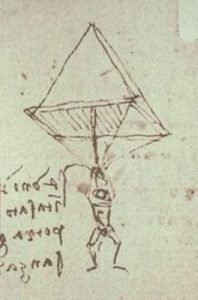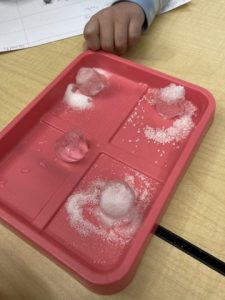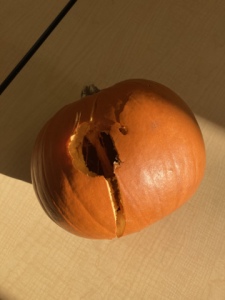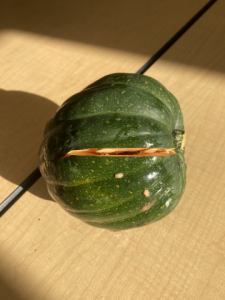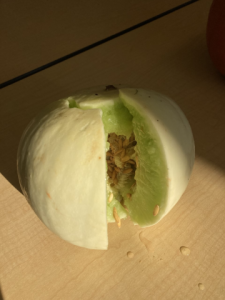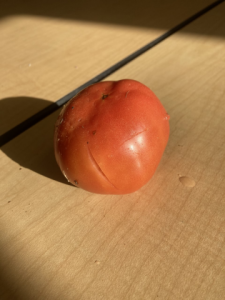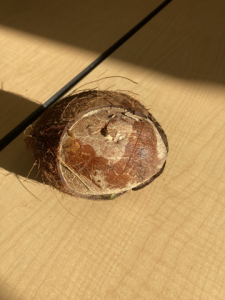Did you know that tea is the most popular drink in the world (other than water)? People all over the world drink different kinds of tea. You might drink iced sweetened tea, hot mint tea, or even fruit-flavoured tea with boba! Today, we examined some of the Science behind making tea.
We started by making observations about the tea. What colour(s) did we notice? What texture/size were the particles? What scents/smells did the tea have?
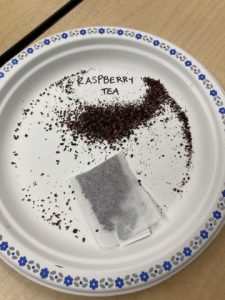
We made observations about 6 kinds of tea: Earl Grey, Vanilla Rooibos, Chamomile, Green Tea, Honeybush Orange, & Red Raspberry. Then, we predicted what colour the tea would be when we diffused it (steeped it) in water.
Then, we added hot water to our tea and let it steep. We observed how the tea changed in colour and scent when steeped in water. Finally, created a Science Journal page by painting a small ‘swatch’ of each tea.
One of the most surprising discoveries for our class… the Green Tea was not very green, and the Earl Grey tea was not grey at all!
